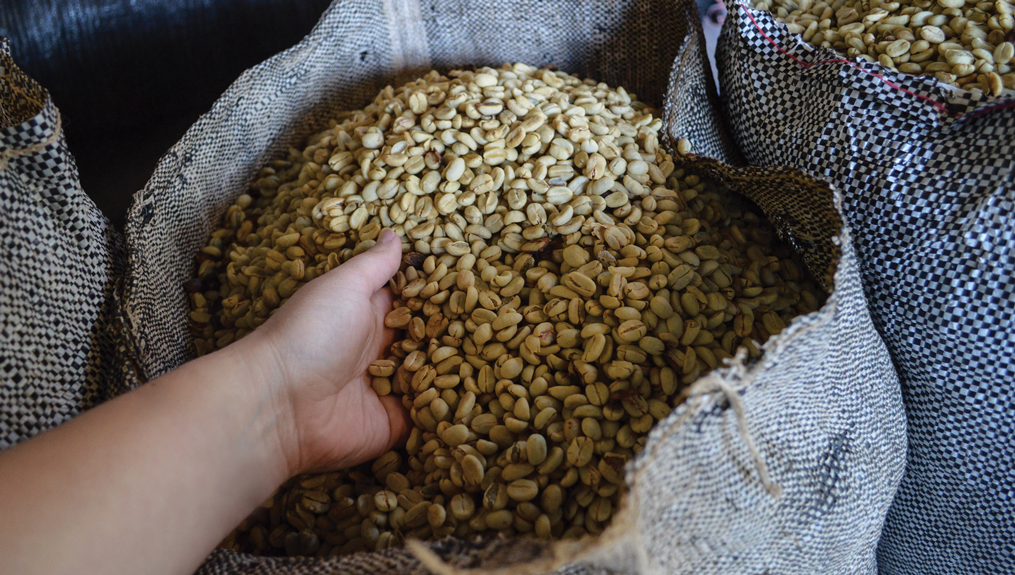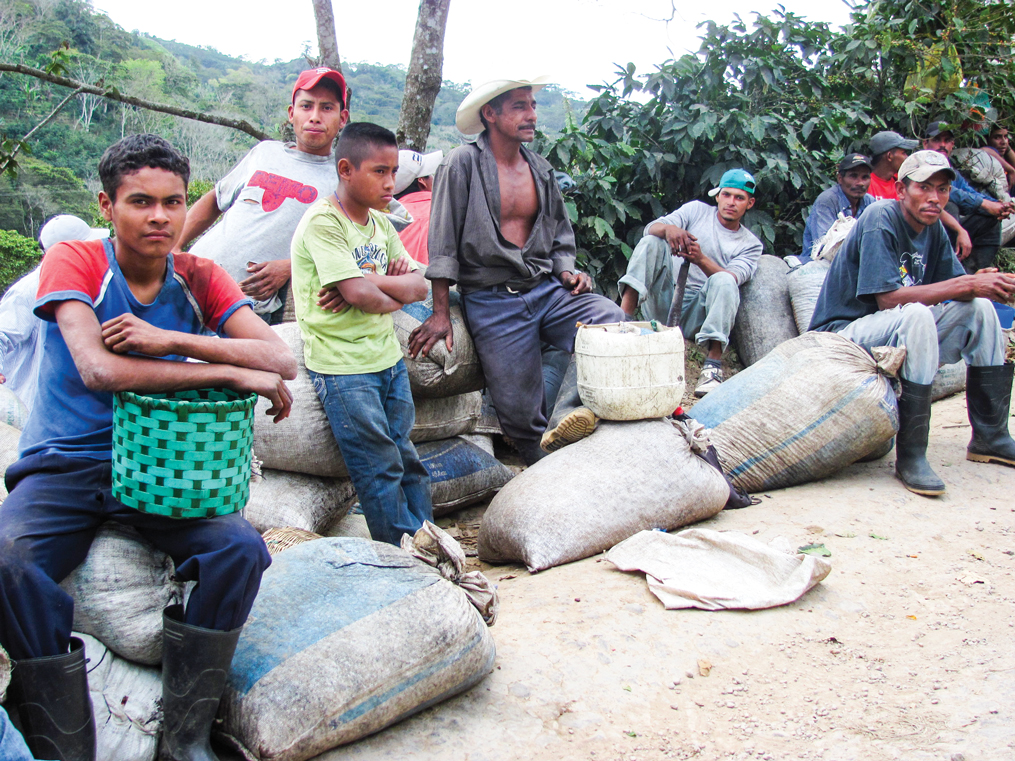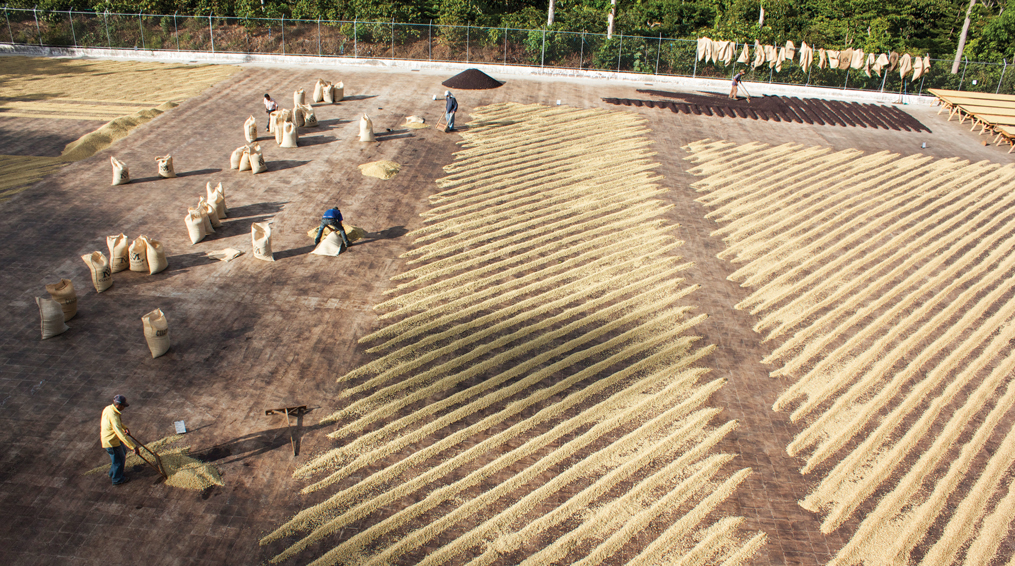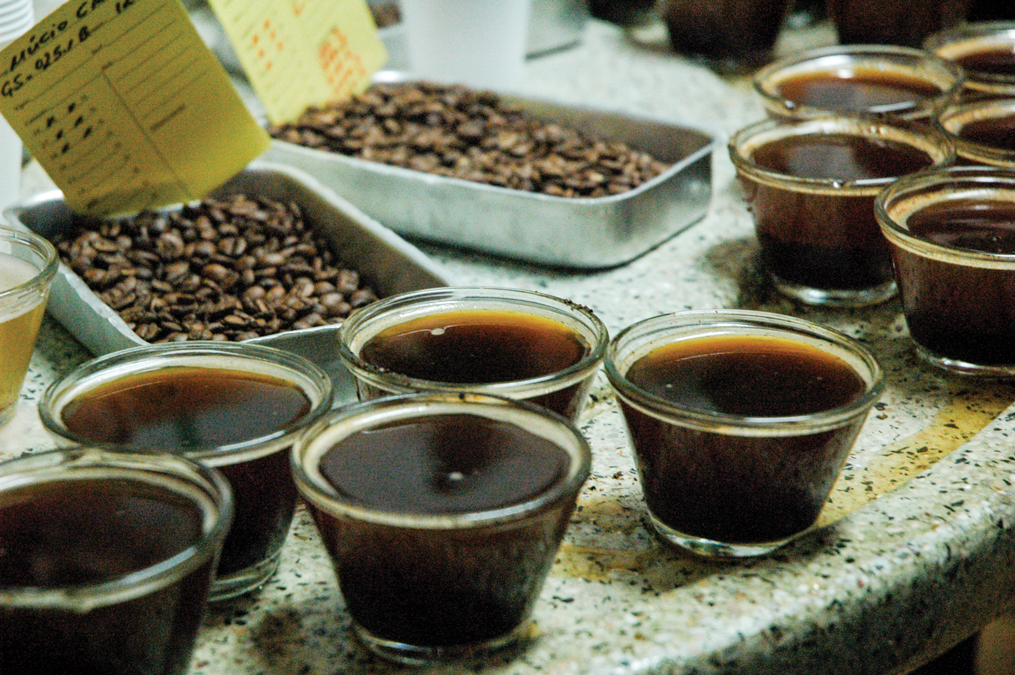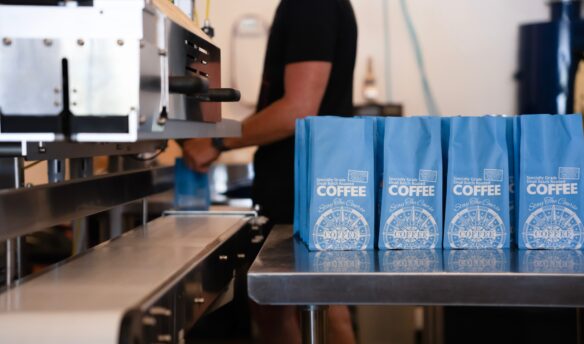Photo by Caitlin Peterkin
F[o]r so many of us, coffee is a daily indulgence; it has been called “the last affordable luxury,” and is often thought of as the fuel of both our productivity and our relationships. Many view coffee as indispensable, and mottos like “Instant human: just add coffee” and “But first, coffee” capture our appreciation—nay, obsession—with the bewitching brew.
For all we love about coffee, there is a growing awareness of an age-old undercurrent: a deceptive riptide that many are calling the “Cost Crisis,” whose forces are being felt more acutely during this sustained low in the Commodity Market Price of coffee.
What is the Cost Crisis?
If you’re familiar at all with this conversation, you’ll likely feel that what follows is overly reductive. You would be right in saying so. In an effort to discuss this affair in its whole, convoluted nature, many well-meaning people have been carried off by this slipstream of good intentions and left their listeners to be crushed by waves of guilt and rage with nary a proactive solution in sight. It’s understandable; probably the most accurate thing that can be said about the Cost Crisis is, “It’s complicated.” Very true, but unfortunately not helpful.
As is often the case, we need both ends of the spectrum. We will do well to aim to appreciate this situation in all its intricacy, all the while searching for straightforward, actionable suggestions that can be executed by the average person. Toward that end, let’s outline the elements most agree are leading factors in this.
Factor 1: The Price of Coffee Doesn’t Go Up
When compared to other products from around the world, this reality becomes startlingly clear. Although prices for almost every other commodity in the world have trended upwards over time, coffee has not. The C market price for coffee is not at an all-time low, rather, on average, it is flatlining. This means that all the resources necessary to produce coffee (fuel, electricity, machinery, steel, labor, real estate, agro-chemicals etc.) have all gone up, and because the price of coffee has not kept pace, the producer is often being backed into a fiscal corner.
Factor 2: There Are Producers Getting Paid Less the Cost of Production
As the world moves towards an increasingly global economy, there is a growing awareness that some producers are unable to cover their production costs, leaving them at a financial deficit year after year. Often called “cost of production,” it is an elementary metric for adding up all it takes to produce a pound/kilo of coffee.
It is important to mention here that this is not a magic number that will solve all our problems. The amount varies widely based on an innumerable list of variables including, but not limited to, country, farm size, yield, labor, cost of goods, etc. Furthermore, accounting for the opportunity cost of growing coffee is incredibly complicated. A producer who could triple their income if they grew another crop is paying a high opportunity cost to grow coffee instead. That being said, estimating all the factors in the cost of production is per pound/kilo can help the producer ask a price above that so they can continue growing coffee.
However, many small business owners do not go to such lengths to track their numbers in greater detail, and the producers with whom we have discussed this idea were nonplussed by the prospect of all the work it would entail.
This is where this undercurrent makes the waters even murkier: How can we be sure a producer is being paid fairly if they do not and will not track their cost of production? That’s is the rub—and it is where many people, at least for a time, get stuck.
Factor 3: The Next Generation Has Options
The final factor, at least in terms of what most people agree on, is the options available to the young people in coffee-producing countries. The romantic notion of an octogenarian farmer in Colombia cultivating coffee out of pure love for the brew is not wholly false, but it is incomplete. Many producers have carried the family farm on their shoulders for no other reason than that they felt they had to do so, or had no other options.
Not so with this next generation.
In speaking with producers in Guatemala, Brazil, Ethiopia, Kenya, and Colombia, a common concern is the lack of interest for coffee production by the younger generation. Peter Mbature from Kamavindi Coffee in Nyeri, Kenya, for example, came back to the farm after university specifically because he saw a vacuum left by young people choosing other paths.
With the advent of smartphones, the ubiquity of WiFi, and the widespread appeal of social media, these young people see the world in a way their forebears could not. Across the world, the average age of producers is going up, leading to widespread anxiety as to who will carry on the work once the current generation retires.
The conversation of generational diversity is more nuanced, but the Cost Crisis plays a role in this movement. Imagine seeing one’s parents and grandparents, even great-grandparents, scrape and struggle to produce a harvest of coffee year after year, only to sell it at a loss each time. Add to this the portal that is our smartphones, through which we can see how the rest of the world is living their life, and it requires little imagination to understand why the next generation doesn’t want to follow the family footsteps and grow coffee. In a twist of poetic irony, many young people move into the city to work in the knowledge economy and end up drinking more coffee instead of producing it. And who can blame them? Dire as the situation may seem, do we really want coffee production to continue simply because the people who grow it have no other viable options? Of course not. If coffee is to continue to be available as the fuel of our relationships, even our lives, it naturally must be a financially feasible career choice.
The Way Forward: Ask Even Better Questions
If you haven’t been carried under by the riptide or succumbed to the crashing waves of complexity, good on you. There is a way forward, full of down-to-earth, practical solutions. The best way to unearth those specific answers is by asking even better questions of the people you work with and buy coffee from, so let’s take a look at those.
Questions to Avoid
In approaching this subject for the first time, I unintentionally started asking all the wrong questions. Although my elementary school teachers assured me there is no such thing as a stupid question, when dealing with cross-cultural financial matters there are some that are better than others. In asking better questions, we get better, more helpful answers. In general, we would encourage asking these questions of the person responsible for buying coffee and not baristas or shop managers. They are likely already over-busy trying to serve their guests, and may not know enough to answer the question in detail with their remaining mental bandwidth.
1. Question to Avoid: How Much Was the
Producer Paid?
This was the first question I asked, and I quickly realized its shortcomings. For starters, in many cultures this question is considered extremely rude. You can ask yourself the same question: would you like to publish your wage online for the world to see? Even if you are comfortable with that level of transparency, the fact remains that the number is meaningless out of context. Without more information, knowing this number can be detrimental; it can lead a person to think they know something they do not: whether or not the producer was paid fairly.
Ask Instead: What does your purchasing model and supply chain look like?
Without getting into the weeds too much, the most common framework for purchasing usually looks like this:
- Producer: The person or people who grew the coffee.
- Exporter: The person/company who stored the coffee in-country and prepared it for export.
- Importer: The person/company responsible for the transportation of the coffee to the country in which it will be roasted and, most likely, consumed.
- Roaster: The person/company who roasts and packages the coffee.
How aware a person is of the players in their purchasing model is a great indicator of how savvy they will be as to where the money is going. If they can’t answer this question, they likely don’t have a solid sense of the distribution of funds.
2. Question to Avoid: What is the FOB Price?
Like the first question, this information can lead to assumed expertise when in reality the FOB (free on board) price is not necessarily connected to how much the producer was paid. And, again, out of context it means less than nothing.
This has become even more important to address given the recent fashion to publish FOB prices online and claim it proves transparency. In a way it does, but not in the way most people think, and certainly not as a point of comparison with the C market price. The two are not connected and inferring they are can be misleading.
Ask Instead: What discussions have you had as a team and/or with the people in your supply chain about Cost of Production?
This helps establish if this topic is even on their radar. If they are not, please do not belittle them. It was not that long ago that we had no sense of the havoc this undercurrent was wreaking and a harsh word from a customer or client would have stunted our growth. Be gracious; you may be the first person to ask them this question. They might have a general answer like, “We work with importers we trust to ensure a fair price is being paid,” or an incredibly specific stance such as, “We no longer sign contracts with C market differentials and instead focus on fixed pricing and annual incremental increases to keep pace with other commodities and inflation.” These are both valid answers; it’s important to recognize that.
3. Question to Avoid: Was the Producer Paid More than Cost of Production?
As mentioned earlier, many small businesses do not have a pulse on their financials to the degree that would enable them to answer this question. The time and energy it would take them to track all their costs is a big ask. If you broach this matter, do so gently and possibly through a translator who is a native in the country of interest. A sensitive question asked too bluntly has burnt more bridges than you may realize.
Ask Instead: What are your thoughts on the reality that some producers are being paid less than it cost them to grow their coffee? What do you do to ensure this isn’t true of any of the people you purchase coffee from?
If they are thinking about these issues, ask them what they see as the way forward. In labyrinthian discourse such as this, all of us is better than any one of us. We need a lot of creative ideas on the table. It’s about finding the right solution, not promoting our own.
We can move forward together, humbly and gently, but forward, nonetheless. We do not have all the answers; we may not even know the best questions to ask. However, bear in mind that no person who ever accomplished anything noteworthy had all they needed when they set out. Begin this dialogue with people you trust and they will help hone the questions you need to ask without berating you or becoming offended. Lead with our heart on your sleeve, let them know upfront your desire is to better understand the world of coffee and explore ways to make sure your choices are part of the solution, not part of the problem. If we can think win-win, listen more than we talk, and work together, we can find a way to keep enjoying coffee as well as the work and relationships it fuels for years to come.
If you want to do a deep dive into this issue, a few recommended resources are:
Red Fox Coffee Merchants
Paying for Coffee – It’s Complicated
redfoxcoffeemerchants.com
Dapper & Wise Roasters
Cost of Production:
A Conversation About the Future of Specialty Coffee
dapperandwise.com
Uncommon Grounds:
The History of Coffee and How It Transformed Our World
by Mark Pendergrast

